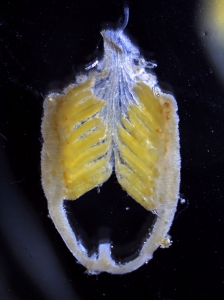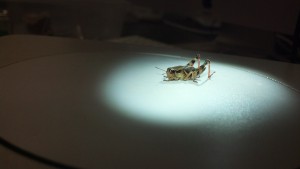Updated: 08/05/2025
The higher up, the smaller the insects…or? Dispersing insects might be different. Read more in the Early View paper “Dispersal potential impacts size clines of grasshoppers across an elevation gradient” by Richard Levy and colleagues. Below is the author’s own summary of the study:
Insects found across elevation gradients that experience seasonality are commonly observed to become smaller with increased elevation. This results primarily from a reduction in season length at higher elevations, which selects for individuals that mature as early as possible, despite losing the benefits of a larger body. However, our study finds that this pattern can be completely negated in species of grasshoppers that exhibit morphologies and behaviors that increase their dispersal. To see if the nullification of this evolved pattern influenced the reproductive fitness of large bodied, high elevation grasshopper populations, we brought females back from the field and allowed them to lay clutches of eggs in the laboratory. The grasshoppers were then dissected and the functionality of their ovarioles (female insect reproductive organs) was analyzed. While we did find that ovariole functionality decreased due to higher dispersal, we were unable to measure any effect on the size and number of eggs laid. Overall, our study provides evidence that dispersal among populations can reduce or counter traits evolved to best suit local conditions.



